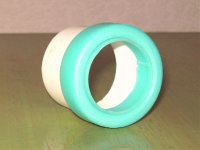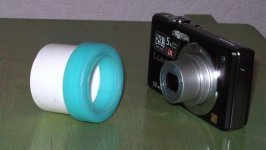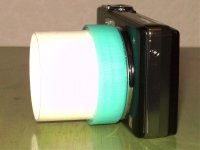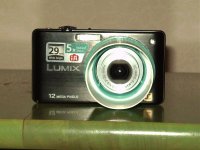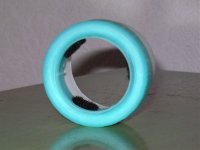lovemuscle
Guest
Made for my panasonic camera.
This is a quick home made digiscoping adapter that cost nothing to make but actually work superb.
It is designed to slip over the eyepiece in an instant for that quick photo.
while your observing through the scope,if you wish to take a photo of your subject then this can easily be done by slipping the adapter over your eyepiece,and push on till in stops(prototype made to fit my kowa 30x wide on tsn4).
Then zoom to about 3x on your camera(panasonic fs7/fs15) and insert into the end of adapter.
This is a perfect fit and there is no play so the lens does not wobble about and enable perfect photos which are centred right in the middle of the eyepiece being perfectly aligned.
Better than the universal adapters for speed and ease of use i promise you.
Best thing is its not permanantly attached and it takes 2 seconds to put on,no messing about trying to align the camera up with centre of the eyepiece anymore.
Last photo show 3x fluffy part of velcro sticky pads to make fit perfect and stops any marks to camera lens.
please tell me your views and feedback.
thanks Gary
This is a quick home made digiscoping adapter that cost nothing to make but actually work superb.
It is designed to slip over the eyepiece in an instant for that quick photo.
while your observing through the scope,if you wish to take a photo of your subject then this can easily be done by slipping the adapter over your eyepiece,and push on till in stops(prototype made to fit my kowa 30x wide on tsn4).
Then zoom to about 3x on your camera(panasonic fs7/fs15) and insert into the end of adapter.
This is a perfect fit and there is no play so the lens does not wobble about and enable perfect photos which are centred right in the middle of the eyepiece being perfectly aligned.
Better than the universal adapters for speed and ease of use i promise you.
Best thing is its not permanantly attached and it takes 2 seconds to put on,no messing about trying to align the camera up with centre of the eyepiece anymore.
Last photo show 3x fluffy part of velcro sticky pads to make fit perfect and stops any marks to camera lens.
please tell me your views and feedback.
thanks Gary
Attachments
Last edited:




